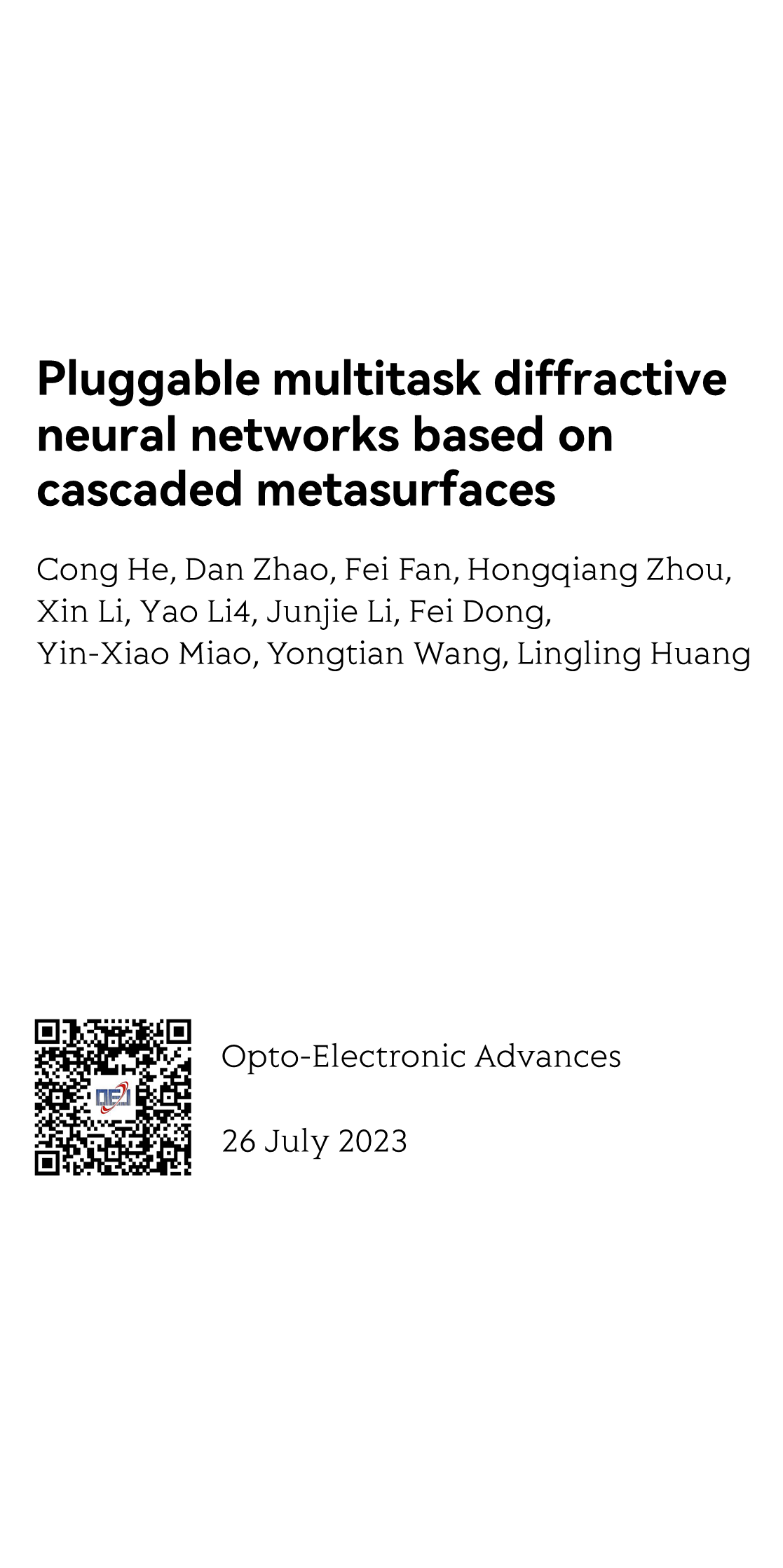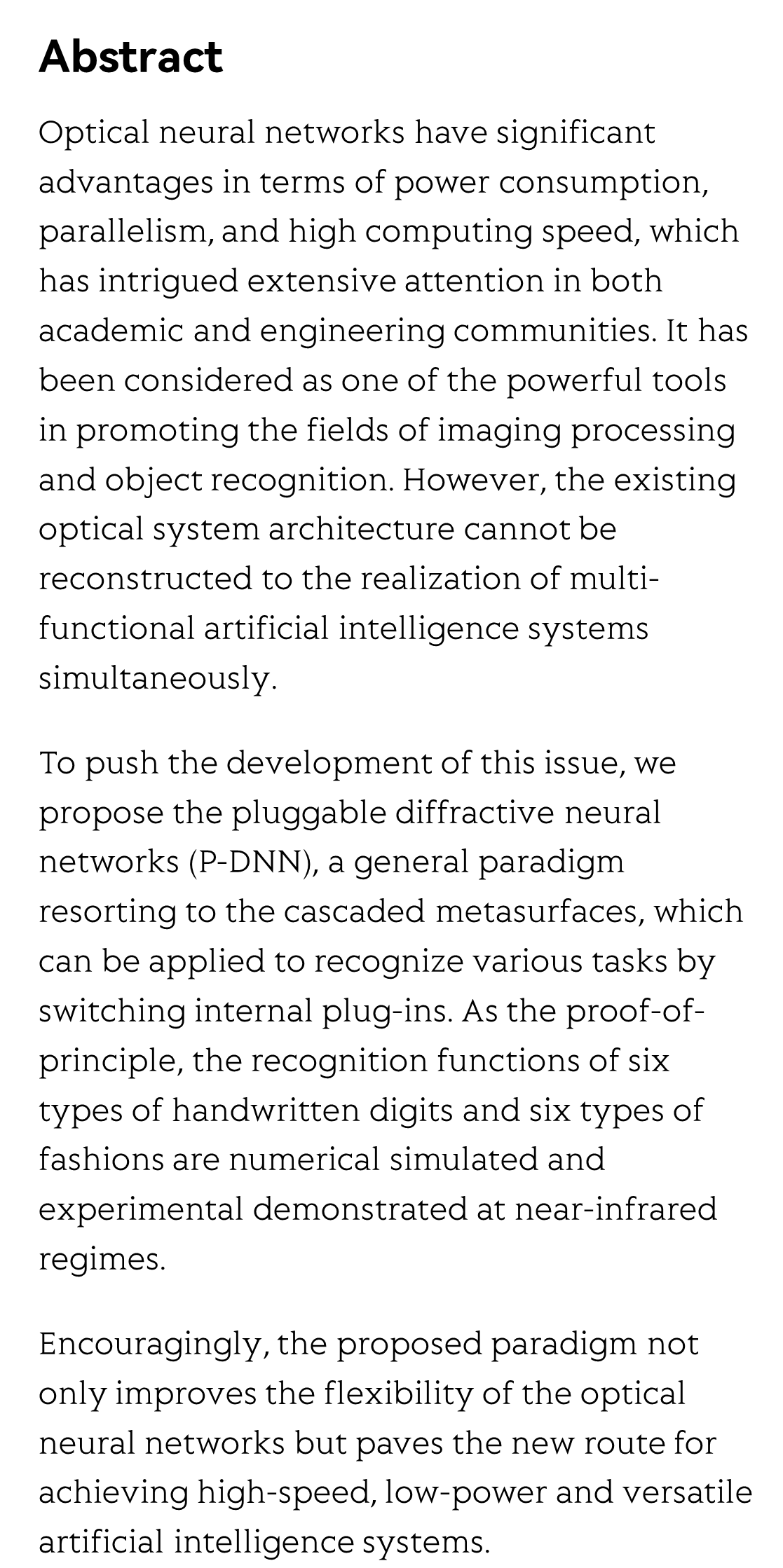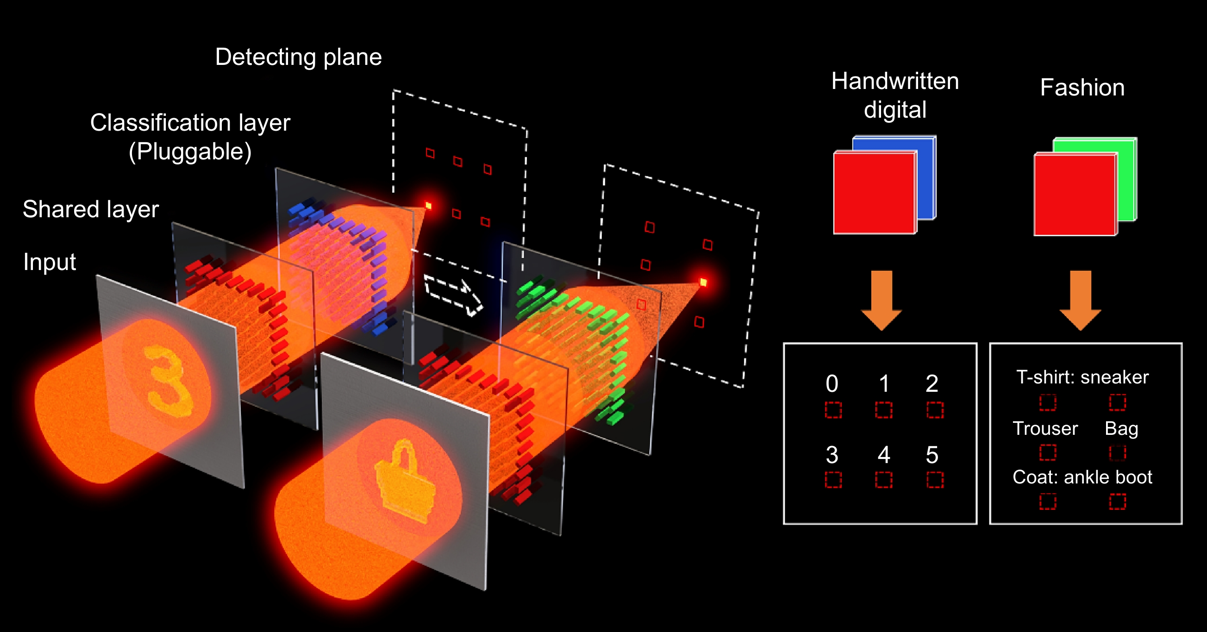(Peer-Reviewed) Pluggable multitask diffractive neural networks based on cascaded metasurfaces
Cong He 合聪 ¹, Dan Zhao 赵旦 ², Fei Fan 范飞 ², Hongqiang Zhou 周宏强 ¹ ³, Xin Li 李昕 ¹, Yao Li 李瑶 ⁴, Junjie Li 李俊杰 ⁴, Fei Dong 董斐 ⁵, Yin-Xiao Miao 缪寅宵 ⁵, Yongtian Wang 王涌天 ¹, Lingling Huang 黄玲玲 ¹
¹ Beijing Engineering Research Center of Mixed Reality and Advanced Display, Key Laboratory of Photoelectronic Imaging Technology and System of Ministry of Education of China, School of Optics and Photonics, Beijing Institute of Technology, Beijing 100081, China
中国 北京 北京理工大学光电学院 光电成像技术与系统教育部重点实验室 混合现实与新型显示工程技术研究中心
² Institute of Modern Optics, Tianjin Key Laboratory of Optoelectronic Sensor and Sensing Network Technology, Nankai University, Tianjin 300350, China
中国 天津 南开大学 天津市光电传感器与传感网络重点实验室 现代光学研究所
³ Department of Physics and Optoelectronics, Faculty of Science, Beijing University of Technology, Beijing 100124, China
中国 北京 北京理工大学物理学院 光学物理系
⁴ Beijing National Laboratory for Condensed Matter Physics, Institute of Physics, Chinese Academy of Sciences, Beijing 100191, China
中国 北京 中国科学院物理研究所 北京凝聚态物理国家实验室
⁵ Beijing Aerospace Institute for Metrology and Measurement Technology, Beijing 100076, China
中国 北京 北京航天计量测试技术研究所
Opto-Electronic Advances, 2023-07-26
Abstract
Optical neural networks have significant advantages in terms of power consumption, parallelism, and high computing speed, which has intrigued extensive attention in both academic and engineering communities. It has been considered as one of the powerful tools in promoting the fields of imaging processing and object recognition. However, the existing optical system architecture cannot be reconstructed to the realization of multi-functional artificial intelligence systems simultaneously.
To push the development of this issue, we propose the pluggable diffractive neural networks (P-DNN), a general paradigm resorting to the cascaded metasurfaces, which can be applied to recognize various tasks by switching internal plug-ins. As the proof-of-principle, the recognition functions of six types of handwritten digits and six types of fashions are numerical simulated and experimental demonstrated at near-infrared regimes.
Encouragingly, the proposed paradigm not only improves the flexibility of the optical neural networks but paves the new route for achieving high-speed, low-power and versatile artificial intelligence systems.
Flicker minimization in power-saving displays enabled by measurement of difference in flexoelectric coefficients and displacement-current in positive dielectric anisotropy liquid crystals
Junho Jung, HaYoung Jung, GyuRi Choi, HanByeol Park, Sun-Mi Park, Ki-Sun Kwon, Heui-Seok Jin, Dong-Jin Lee, Hoon Jeong, JeongKi Park, Byeong Koo Kim, Seung Hee Lee, MinSu Kim
Opto-Electronic Advances
2025-09-25
Dual-frequency angular-multiplexed fringe projection profilometry with deep learning: breaking hardware limits for ultra-high-speed 3D imaging
Wenwu Chen, Yifan Liu, Shijie Feng, Wei Yin, Jiaming Qian, Yixuan Li, Hang Zhang, Maciej Trusiak, Malgorzata Kujawinska, Qian Chen, Chao Zuo
Opto-Electronic Advances
2025-09-25





